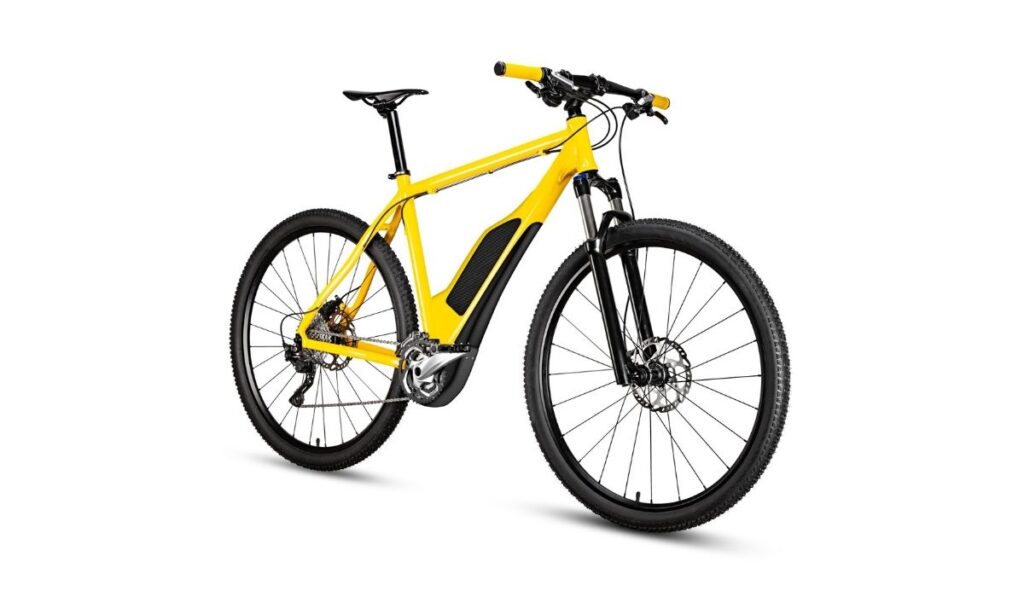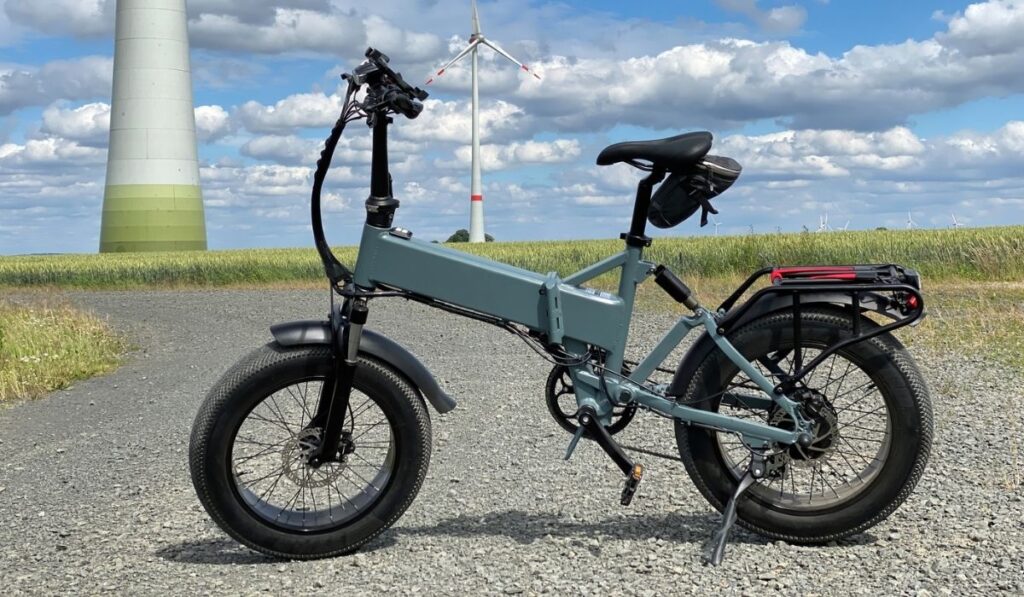Getting into electric bikes can be confusing, to say the least. Volts, amps, watts, and other terms can confuse new riders. So, what’s the deal? What exactly are watts, and how much do you need to ride?
The power, or wattage, that your e-bike needs will depend on your commute, weight, and the terrain you’re riding on. Lighter riders should look for an e-bike with 250-350 watts, and heavier riders should look in the 500-750-watt range. Considering voltage and amperage may be important to you too.
Besides the wattage, it’s also essential to know the voltage and amperage of your e-bike because these parameters really affect the quality and user experience of actually riding your bike a lot. Learning this information will help you make informed decisions when purchasing your first electric bike.
E-Bike Voltage, Wattage & Amperage – What Do These Mean?

The world of electric bikes comes with a steep learning curve. Terms like volts, wattage, and amperage can leave new riders concerned. So, what do all these different terms mean?
What is Voltage?
Volts are the measure of electric potential, or the number of electrons, between any two points in an electrical circuit. Volts are marked by a capital “V.”
You can think of volts as the water pressure of a hose. The pressure in a hose moves the water, just as volts push electrons through a conductor.
What is Amperage?
Amperage, or Amps, is a measurement of electric currents. This measurement is the volume of electrons flowing in a circuit. Amps are similar to the actual water in a water hose.
Fire hoses have more water in them than traditional garden hoses do, just as a 50 amp circuit would have more electrons than a 10amp circuit.
However, also similarly to water hoses, electrical circuits can only take so many electrons before they burst. If you push too many electrons through a wire, it may burn up. This is where circuit breakers and fuses come into action to prevent potential damages.
What is Wattage?
Watts are the measurement of electrical power. Watts are similar to horsepower. 745.7 Watts are equal to 1 hp. Wattage is equal to Volts * Amps.
Here are some watt-to-horsepower conversion examples:
- A 350-watt e-bike is a 0.46 horsepower e-bike
- A 550-watt e-bike is a 0.73 horsepower e-bike
- A 750-watt e-bike is a one horsepower e-bike
- A 1000 watt e-bike is a 1.34 horsepower e-bike
High voltage, low amperage circuits are similar to a thin, high-pressure water stream. It may be powerful, but it’s too small to push anything.
Low voltage and high amperage circuits are similar to a huge pipe with just a little bit of water trickling out. They aren’t practical and won’t move anything.
High voltage and high amperage circuits will provide high wattage. Higher wattage equals more power and more fun on your e-bike. For example, professional cyclists can produce around 400 watts of power. So, a 500-watt e-bike is like having a world-class cyclist helping you pedal.
Factors That Determine E-Bike Power
Electrical components aren’t the only factor that affects e-bike power. Other factors that affect e-bike power are weight, terrain, configuration, and more.
Weight: It’s no surprise that bikes and riders that weigh less can move faster. Lighter riders can opt for less powerful e-bikes and still get the same amount of power. However, hefty riders will want electric bikes in the 500-750 Watt range.
Terrain: Rough terrain and steep hills also affect electric bike power. The steeper the hill, the more wattage you need to climb quickly. Heavier riders will need even more wattage to successfully climb hills and traverse rough terrain. Lighter riders will climb hills with lower wattage in the 250-500 Watt range.
Configuration: The configuration of an electric bike will also affect its power. Different frame designs, such as step-through frames, won’t have the ability to climb hills and traverse harsh climates. Racks, bags, and other accessories can also affect an e-bike’s balance and power.
Motor Placement: Both the motor’s power and placement will affect e-bike power. Hub motors may create imbalances in an e-bike and cause a reduction in power. Mid-drive motors sit right under the rider’s pedals, making for a balanced ride.
These are just a few of the factors that affect electric bike power. Other variables that can alter your bike’s power are the battery, the age of your electric bike, and how often it’s been serviced.
Why Higher Wattage Doesn’t Necessarily Mean Higher Power

Higher wattage doesn’t always mean higher power. This is in part because of how manufacturers label their electric bike products.
Common e-bikes and conversion kits can be mislabeled. For example, you may purchase a 250 Watt conversion kit that has the ability to provide more power to your bike. This isn’t a bad thing, as you’re getting more than you pay for. The problem lies in how confusing this can all be for the consumer.
E-Bike Power Classes
Electric bikes come in multiple power classes. You’ll find most electric bikes online falling under the three-tier classification system. The three classes are tiered from 1 to 3. All of these tiers offer pedal-assist at varying degrees and speeds.
- Class 1: Pedal-assist without throttle up to 20mph
- Class 2: Pedal-assist with or without throttle up to 20mph
- Class 3: Pedal-assist up to 28mph and throttle up to 20mph
We can also separate electric bikes by their wattage, which can give us a better idea of what to expect from an electric bike model.
200 W – 250 W Electric Bikes
Although you can find electric bike models under this range, this number seems to be the entry point. 250 Watt e-bikes are best suited for lighter riders and may struggle climbing hills. These models are suited for flat ground cruising and everyday commutes. With these models, you can get up to speeds of 15-20mph.
350 W – 550 W Electric Bikes
Bikes closer to the 550 Watt range will feel less sluggish than a 250 Watt model. Lighter cyclists will notice a distinct difference between this power range and the 250 Watt range.
550 Watt e-bikes will have a much easier time conquering hills for both heavy and lighter cyclists. On top of that, these models can easily reach up to 20mph.
750 W – 1,000 W Electric Bikes
750-1,000 Watts is where the fun truly starts! All riders will notice a distinct difference with this range. 750 Watt e-bikes will easily climb hills and traverse through rough terrain. In this range, riders can easily reach speeds of 28mph.
1,500+ W Electric Bikes
These bikes can easily reach speeds of 32mph. 1,500 Watt electric bikes are similar to low-power motorcycles. These models will benefit heavier riders the most, providing effortless hill-climbing power.
How to Choose The Right E-Bike Wattage for Your Needs
When determining the right amount of watts for your electric bike, you’ll need to consider your commute, weight, and traveling needs. These factors will help you make correct decisions along the way.
Weight: Weight is potentially the most significant factor when determining e-bike wattage. Lighter riders weighing 120-140lbs can get away with using 250-350 Watt electric bikes. Heavier riders will want more robust models in the 500-750 Watt range.
Commute: Your average commute is also essential to factor in when determining the e-bike wattage for you. Harsher commutes through rough terrains will require higher-wattage e-bikes, whereas low-power models may suffice for leisurely city commutes.
Long-Distance Travel: If you’re using your electric bike for long-distance traveling, you may want to opt for a more robust model. Electric bikes with higher watts will be able to travel for longer and faster. This additional power will allow you to weave through traffic with greater ease.

Brecken Norris
Saturday 30th of March 2024
Your blog post had me hooked from the very beginning!
Lucy Ciara Meyer
Saturday 2nd of March 2024
Keep up the fantastic work and continue to inspire us all!
Addyson Aniyah Adelina Rogers
Saturday 2nd of March 2024
Keep up the fantastic work!
Lucian V. Cole
Saturday 2nd of March 2024
Let us know in the comments which of their posts has resonated with you the most.
Natalie P. Shepherd
Saturday 2nd of March 2024
Keep up the fantastic work!